#Assamese language
Explore tagged Tumblr posts
Text
How is English to Assamese Translation Different from Bengali Translation?

The Indian subcontinent is a tapestry of languages; every region prides itself on its linguistic heritage. Such diversity makes it challenging for inter-lingual communication; hence, translation shall have an enormous role in filling that gap. That's why this book, translating from English into One Indian Language, is different from Translating into Another. This blog post will discuss the differences between English to Assamese translation and English to Bengali translation, keeping in mind the disparity that makes each process unique.
Assamese and Bengali are Indo-Aryan languages from the same stock, i.e., from Sanskrit, and family-siblings in the Eastern Indo-Aryan language branch. That creates some similarity in their vocabulary and grammar because of common parentage. However, enormous differences have occurred over the centuries, making the translation task pretty intricate.
Differences between Assamese and Bengali
Phonetics and Pronunciation:
One of the most apparent differences lies in phonetics. They share a similar sound, but they also vary in distinct pronunciation and tones. For example, some of the consonant clusters found in Bengali will be absent or represented differently in Assamese, so the different phonetic structures of words will determine how that spelling is voiced over and deciphered in a translation. A word that sounds alike in English might be pronounced differently in Assamese and Bengali, so two different transliteration techniques would be needed.
Vocabulary and Lexical Choices:
While sharing parts of their vocabulary due to their common ancestry, the two languages have also acquired words from different sources in other directions. Apart from borrowing from other sources, Bengali has its historical relics more in Kolkata (formerly Calcutta), and the activities it witnessed had made it vulnerable to more Persian and English than Assamese. Assamese has retained much of its original vocabulary and has been influenced by Tai-Ahom and other Tibetan-Burman languages. Lexical borrowing and development differ for Assamese and Bengali, so a word-for-word translation from English may have different results.
Grammatical Structure:
Regarding the basic grammatical structure, Assamese and Bengali are no exception. However, their grammatical structures differ in the sentence formation in which the verb conjures and the use of postpositions. Bengalis have more complex sentences compared to Assamese. Honorifics and polite forms are also different between the two languages. Such grammatical distinctions demand different handling while translating.
Culture Context Language comes with culture. While Assamese and Bengali cultures share a common heritage, they are also unique in traditions, customs, and societal norms. In return, language use and vocabulary in the target text will reflect and affect idioms, proverbs, and metaphors. In these areas, proper translation will reflect not only language but also a sense of the culture being transmitted.
Conclusion
Even though Assamese and Bengali are related languages, English to Assamese translation differs significantly from English to Bengali translation. These differences emanate from phonetics, vocabulary, grammar, and cultural context variations. Understanding these subtleties would be crucial for producing accurate, effective, and culturally appropriate translations. In seeking translation solutions, it will be essential to engage translators who are native speakers of the target language and hold a deep understanding of its cultural context. Such an engagement is sure to get the translated text resonating well with the intended audience and convey the message effectively.
#English to Assamese Translation#English to Bengali Translation#English To Assamese#English To Bengali#Language Translation#Translation Services#Assamese Language
0 notes
Text
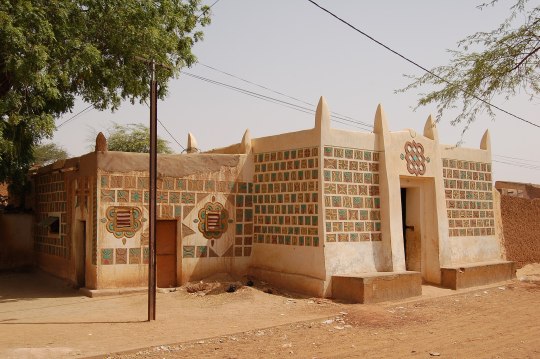
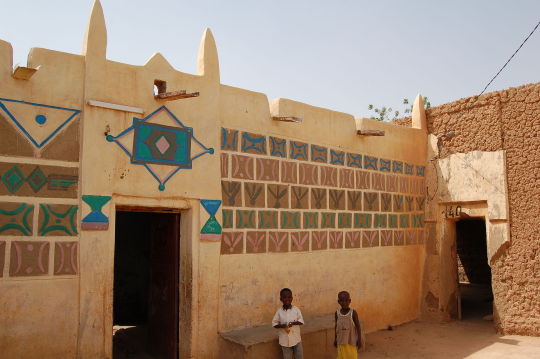
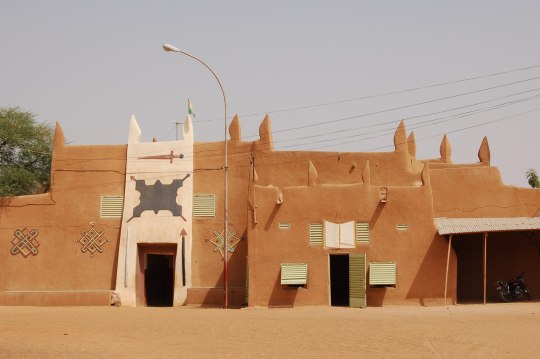

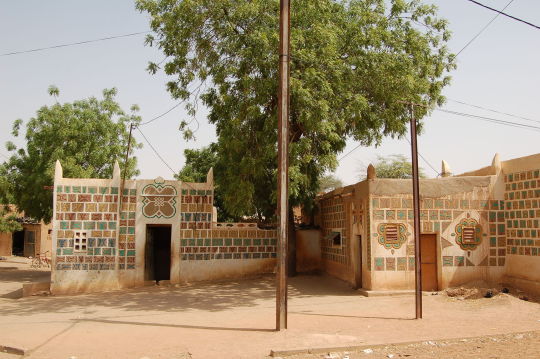
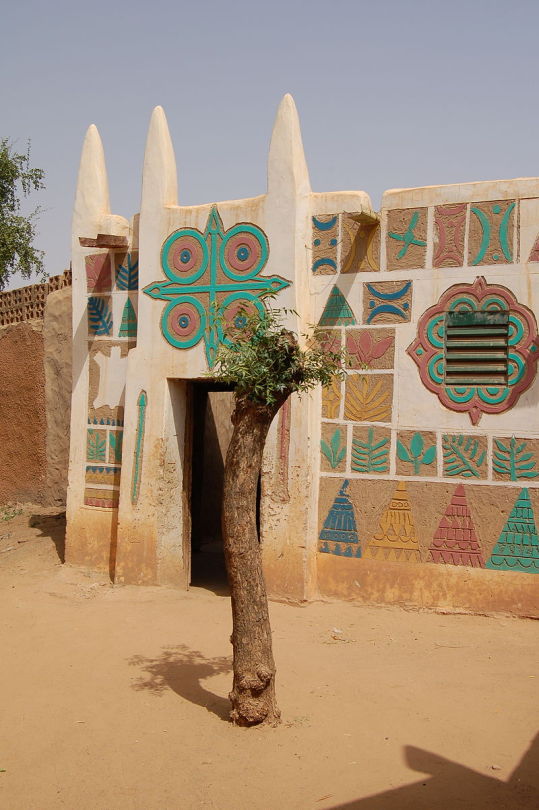
some of the architecture of zinder, niger. zinder rose from a small hausa village into an important center of trans-saharan trade during the 18th century, culmunating in it becoming the capital of the sultanate of damagaram in 1736.
#niger#hausa#architecture#my posts#in case you didn't know: hausa is a part of the afroasiatic language family (same family semitic langs are in)#there's a lot of theories about how exactly afroasiatic speakers spread & there isn't a consistent cultural/migration pattern#like w/ indo-euro languages#but hasua is probably to arabic/hebrew/syriac what english is to bengali or assamese (except even less similar)#i can pick out some hausa words myself ('sama' is 'heaven') but tbh im not sure how many are loadwords from arabic (since they use#'dunya' for 'world' for example). most hausa are muslim so itd make sense if they took some arabic words
644 notes
·
View notes
Text

The struggle of explaining the pronunciation of these three fuckers to other Indo-Aryan language speakers is real...
#“x” is our friend#but it does an awful job at explaining#desiblr#assamese#desi tumblr#desi stuff#being desi#desi tag#desiposting#indian languages#languages#desi
28 notes
·
View notes
Text
Navagraha Stotra in Assamese নৱগ্ৰহ স্তোত্র
Navagraha Stotra in Assamese, Mantra in Assamese ,नवग्रह स्तोत्र ব্যাস ঋষি মহাভাৰত, বেদ, পুৰাণৰ দৰে অধিকাংশ জনপ্ৰিয় সংস্কৃত শাস্ত্ৰ সংকলন কৰাৰ বাবে জনপ্ৰিয়। তেওঁ বিভিন্ন দ��ৱতাক উৎসৰ্গিত বহুতো গীত আৰু স্তোত্ৰও ৰচনা কৰিছে। হিন্দু ধৰ্মৰ ন গ্ৰহ দেৱতা নৱগ্ৰহৰ প্ৰতি উৎসৰ্গিত ঋষি ব্যাসে ৰচনা কৰা বহু গীতৰ ভিতৰত নৱগ্ৰহ স্তোত্ৰ অন্যতম। Navagraha Stotra in Assamese নৱগ্ৰহ স্তোত্র মন্ত্ৰ জবাকুসুমসঙ্কাশং…

View On WordPress
#Ancient Hindu Knowledge & Wisdom#Assamese Language Literature#Best Assamese Blogs#Famous Hindu Temples in Assam#Hindu Mantra in Assamese#Hindu Religious Beliefs#Hindu Religious Faith
1 note
·
View note
Text
Go Local with Assamese Language
Expand your audience with expert Assamese Translation Services. Our native translators deliver accurate, context-aware translations for documents, websites, and business needs. Fast, reliable, and tailored to your goals. https://www.laclasse.in/
#Assamese Translation Services#Professional Assamese Translators#Assamese Language Translation#English to Assamese Translation#Assamese Document Translation#Assamese Translation#Localize Assamese
0 notes
Text
Take a look at this post… 'মাতৃভাষা দিৱস আৰু ভাষা আন্দোলনৰ ইতিহাসৰ লেচেৰী বুটলি। History of Mother Language Day and Language Movement.'.
http://anuragblogadress.blogspot.com/2025/02/history-of-mother-language-day-and.html Swami Vivekanand

View On WordPress
0 notes
Text
The Evolution of Assamese Language and Culture: A Brief Overview
Assamese is an Indo-Aryan language spoken mainly in the northeastern Indian state of Assam, where it is the official language and the lingua franca of the region. It has over 15 million speakers and a rich literary tradition that dates back to the 9th century. Assamese culture is a blend of diverse ethnic, religious, and linguistic influences that have shaped its history and identity over the…
View On WordPress
1 note
·
View note
Text
#english to assamese translation services#professional english translation services#assamese document translation services#language service provider#translation company
0 notes
Text
I was trying to look up whether other languages have a specific word for first snow, and instead stumbled upon a language I had never encountered before, which has one of the most beautiful written alphabets that I have ever seen. Assamese, or Asamiya, which is spoken mainly in the state of Assam in India. Like holy shit look at how pretty that is.

1K notes
·
View notes
Text
Poornima - Channe Ke Khet Mein 1994
Anjaam (Consequence) is a 1994 Indian Hindi-language psychological thriller film directed by Rahul Rawail. It stars Madhuri Dixit and Shah Rukh Khan in lead roles with an ensemble supporting cast. The film's music was composed by Anand-Milind, with lyrics written by Sameer. The film is about a woman facing the brunt of her obsessive stalker. It also focuses on the atrocities committed against women. At the 40th Filmfare Awards, Anjaam won Khan the Best Villain award for his performance. Madhuri Dixit repeated the iconic dance moves for the song in the 2022 Netflix series The Fame Game when her character meets some fans dancing to it.
Poornima Shrestha was the first successful child singer in Hindi films, and became one of the most prolific female playback singers in Bollywood during the 1990s. She was one of the top-ten selling 1990s artists with her album Mera Dil Bole Piya Piya. Poornima has sung in many languages including Bengali, Nepali, Marathi, Bhojpuri, Punjabi, Gujarati, Oriya, Rajasthani, Assamese, Haryanvi, Garhwali and Arabic. Apart from films, she has sung numerous songs in genres such as Baal Geet, Bhavgeet, Bhajan, Ghazal, Chutney and Indipop.
"Channe Ke Khet Mein" received a total of 67,7% yes votes!
youtube
517 notes
·
View notes
Text
List of Most Spoken Languages in Assam: English to Assamese Translation

If a regardable state, Assam is said to be famous for the fact that it has a wealth of cultural and linguistic diversities. The population of Assam comprises several ethnic groups and communities; therefore, these languages are native to various regions across the state. This is because the multilingual portraiture of the state shows the history of influence and cultural interaction with the migration pattern. Today, English to Assamese translation is a must for all businesses and individuals who seek effective communication in Assam. This would enhance access among themselves and between communities. Knowing the major languages will definitely help one navigate through this linguistic environment more effectively.
1. Assamese: The Official Language
Assamese is the official national language and the most widely spoken language in Assam. Over 15 million people use Assamese for administration, education, and in the media. It has a rich and ancient literary history and serves as the primary mode of communication for the majority of the population. Translation from English to Assamese would assist businesses, educational organizations, and even government agencies in effectively reaching the local audience at ease.
2. Bengali – The Second Most Spoken Language
Bengali is also spoken in this state. It has a relatively big share in Assam, particularly in the Barak Valley region (Cachar, Karimganj, and Hailakandi). The bulk of the Bengali-speaking population in the state has historically immigrated to it. Again, Bengali is an official language in the Barak Valley, and thus, Assamese translation and Bengali translation are important.
3. Bodo: An Important Indigenous Language
Bodo is one of the indigenous languages spoken by a large population in Assam, mainly by the Bodo community residing in the Bodoland Territorial Region (BTR). It is listed as one of India's recognized scheduled languages. In Assam, it boasts a co-official status. Bodo owns its script and literary heritage, and continuous efforts are made to protect and promote this language.
4. Hindi – The Most Understood Language
Hindi can be found all over Assam, especially in metropolitan areas and in business bodies. Though brought in through migration and trade, Hindi has taken a strong root here, and a large number of people understand it. Most former Assamese people used Hindi as a link language for communication.
5. Nepali The Gorkha Speaking Community Language
Nepali is a language spoken by the Gorkha community in Assam, and it is predominantly used in the districts of Sonitpur, Tinsukia, and Dibrugarh. This language has strong roots in Assam, and many people who speak Nepali are engaged in activities like agriculture, trade, and armed forces.
6. Other Indigenous Languages and Tribal Languages
Apart from the above-mentioned major languages, ethnic groups speak several tribal languages in Assam, and some of the very important ones are:
Mishing (spoken by the Mishing community)
Karbi (spoken by the Karbi people)
Dimasa (spoken by the Dimasa community)
Rabha (spoken by the Rabha tribe)
Tiwa (spoken by the Tiwa people)
These languages are central to Assam's cultural and linguistic ecology and are spoken by many indigenous communities in the state.
The Role of English to Assamese Translation
As Assam continues to grow into a commercial and educational hub, translation and transliteration have become more important for proper communication. Businesses, government agencies, and digital platforms all need to translate their communication accurately to attract the Assamese speaker population and make it inclusive and accessible.
Translation solutions can effectively break down language barriers and enhance understanding between different linguistic groups in Assam when it comes to website content, advertisements, public documents, and educational material.
Conclusion
The rich diversity of languages in Assam just marks the presence of a vibrant culture. While Assamese continues to dominate, Bengali, Bodo, Hindi, Nepali, and a variety of tribal languages only help enhance the state's multilingual character. For any organization or individual interested in reaching out to Assam's diversified population, English to Assamese Translation becomes the key to creating better engagement and strong associations. Respect and knowledge of these languages guarantee unbreakable communication and cordial cultural relations in this colorful state.
#Assamese Language Translation#Languages Of North East#Assam Language List#Most Spoken Languages Assam#Assamese Language Learning#Assam Language Facts#Assamese To English#Assam Language Culture#English to Assamese Translation#Assamese Language Online
0 notes
Text
rafayel x desi!reader

Rafayel, who first met you when you secretly snooped into his studio as the only Indian hunter you are. He landed on top of you and swore you were the most beautiful woman to exist.
Rafayel, who later on becomes so interested in you not in the stalkerish way and I mean it that he starts flirting with you. My guy is absolutely smitten, he has a crush on you btw.
Rafayel, who gets to learn more about your Indian roots, not to mention he went to India once for an art exhibition in Jaipur.
"India is a pretty exquisite place. I wanna go there again, but this time with you."
Rafayel, who later confesses and becomes your boyfriend. You say yes because you also have a crush on him.
Rafayel, whose wish is to paint a portrait of you in a lehenga, adorned with jewellery and flowers my guy was inspired by the artworks of Raja Ravi Verma.
Rafayel, who can't stop staring at you, the way your hands were decorated with henna, which he did it btw (very artistic right?) , the way your jhumka and bangles held sweet whispers to his ear, the way your hair was adorned with flowers and hair ornaments. He just can't stop staring at you :'(
Rafayel, who makes you his muse, who imagines that you're the most beautiful goddess carved out straight from an Indian renaissance painting.
Rafayel, who still can't stop staring at you while he paints a portrait of you.
Rafayel, who likes seeing you wearing the saree. He's in awe.
Rafayel, who decorates your lustrous hair with flowers.
Rafayel, who'd love to waltz to a soft Hindi song with you.
Rafayel, whose attempts at learning your native language (Hindi, Tamil, Assamese, etc.) goes way out of the league. At first, he's curious to learn about your language all thanks to you who's talking to a relative, and the second day he learns it so that he understands what you're talking about to your relatives.
Your relatives already know about you and him. Most of them are quite skeptical since they're a part of Asian parents and when you know that Asian parents don't consider art as anything but once they find out more about your boyfriend, like how he's richy-rich, they've been quite less worried about you, especially your parents. They've been pestering you with questions about your marriage, which you told them that there'll be a right time. Also, be careful when you speak with your parents when Rafayel is around as he somehow grasps the translation of your language. Sucks!
Rafayel, who has met you parents through video calls, even at one time when you actually went to India for your vacations with him. Your parents were easily warming up with him and the next day, you were surprised that they were so eager to go to a museum or an art exhibition with him.
Rafayel, who easily warms up with the neighborhood kids, even your cousins, nephews and nieces. He'd make a pretty good dad, just watch out from your cousins who'll annoy the shit out of you by asking you questions like, "when are you guys getting married?" or "when are you guys having babies?" the last question makes you blush more.
Rafayel, who back on Linkon city, holds your hand while waking on the shores of Whitesand Bay. He has a surprise for you.
Rafayel, who gets on one knee and pulls out a red-velvet box. He opens it and reveals a shiny ring, its bands made of polished silver and a turquoise bead as the centerpiece. The ring's delicate features brings a light to the proposal and as Rafayel places the ring on your ring finger, you sob onto his chest. 3 years after dating him.
Rafayel, who announces your parents and his aunt about the proposal first. Your parents were so happy for you now even happier since they're planning for your suhaagraat, good luck.
Rafayel, who is soooo happy to be on your side, forever. His girl, his bride and his wife.
#lads rafayel#rafayel love and deepspace#rafayel x reader#rafayel x mc#rafayel x you#lads#love and deep space#rafayel lads#love and deepspace rafayel#love and deepspace#rafayel fluff
51 notes
·
View notes
Note
How many languages can you name off the top of your head?
German, Yiddish, Low German, Frisian, Dutch, Flemish, French, Breton, English, Manx, Welsh, Scots, Scottish Gaelic, Irish, Occitan, Catalan, Valencian, Aragonese, Spanish, Galician, Portuguese, Italian, Romansh, Danish, Icelandic, Norwegian, Swedish, Polish, Belarusian, Ukrainian, Russian, Bulgarian, Hungarian, Czech, Slovak, Romanian, Moldovan, Macedonian, Montenegrin, Croatian, Bosnian, Albanian, Serbian, Greek, Turkish, Kurdish, Slovenian, Finnish, Lithuanian, Sorbian, Latvian, Estonian, Sami, Romani, Ladino, Georgian, Armenian, Azerbaijani, Arabic, Hebrew, Aramaic, Farsi, Turkmen, Tajik, Uzbek, Kazakh, Kyrgyz, Circassian, Dari, Pashto, Urdu, Hindi, Punjabi, Bengali, Marathi, Sinhala, Malayalam, Kannada, Tamil, Telugu, Assamese, Nepali, Bhutanese, Burmese, Thai, Hmong, Khmer, Karen, Lao, Vietnamese, Tagalog, Hiligaynon, Cebuano, Indonesian, Javanese, Malay, Mandarin, Cantonese, Mongolian, Korean, Japanese, Ainu, Tok Pisin, Dyirbal, Noongar, Maori, Samoan, Palauan, Hawaiian, Tlingit, Haida, Lushootseed, Tsimshian, Hopi, Navajo, Lakota, Mohawk, Cherokee, Cree, Ojibwe, Potawatomi, Blackfoot, Fox, Mikmaq, Aymara, Quechua, Guarani, Inuktitut, Ocaina, Mapudungun, Tamazight, Tigrinya, Amharic, Oromo, Twi, Igbo, Fon, Yoruba, Afrikaans, Ndebele, Sotho, Tswana, Zulu, Xhosa, Herero, Lingala, Swahili, Somali, Kikuyu, Bambara
I'm soooo sure I forgot a lot of really obvious ones and it's an embarrassingly small list but I'm also listening to an audiobook at the same time. I'm also erring on the side of caution when it comes to dialect continuums.
23 notes
·
View notes
Text
Mutuals reblog this and lemme know some of the popular pre-Hindu/non-Hindu deities in your local mythologies. I'll go first!
Assamese mythology
Bordoisikhla/Bordoisila: A spirit storm goddess. She's also the goddess of nature, rain and wind. The term is derived from the Bodo (and other Tibeto-Burman languages) where 'bor' = 'wind', 'doi' = 'water' and 'sikhla' = 'girl'. The Bordoisila wind marks the beginning of the spring season, and the Assamese month of Bohag. In Bengali and Odia this wind is usually known as Kalboishakhi.
Kecaikhati: Flesh-eating tribal goddess of the people of Mayong. She's the daughter of Bura-Buri/Gira-Girasi, the Primordial Parents who later got sanskritised to Shiva and Shakti (literal meaning- 'the Old Ones') and the younger sister of Pisadema. Initially, she offered human flesh to her parents for introducing sin into the world, but eventually the priests (called the Deori, and hence forms the Deori community) started sacrificing humans to her instead.
Luit-Dehing: A powerful and benevolent river goddess associated with the Brahmaputra River, popular among the people who live near the banks.
The entire Bathou pantheon (religion of the Bodo people)
The entire Ahom pantheon (religion of the Ahoms)
Non-Hindu deities who are now assimilated into Hinduism:
Kamakhya: Originally a tribal goddess.
Manasha: Originally another tribal goddess, primarily popular amongst the Rabha people.
#assamese mythology#assamese#non-hindu deities#tribal deities#desiblr#desi tumblr#desi tag#desiposting#desi side of tumblr#mythologies#mythology#pantheons#paganism#paganblr#polytheism#hindu mythology#hindu goddesses#kamakhya#manasa
36 notes
·
View notes
Text
Children's Day in India,শিশু দিৱস
Group of Indian Boys and Girls Celebrating Children’s Day Children’s Day in India: A Tribute to Pandit Jawaharlal Nehru, 14th November Childrean’s Day is celebrated in India. Importance of Childrean’s Day, Why Childrean’s is Celebrated in India? When is Childrean’s day observed? Children’s Day in India. শিশু দিৱস (অসমীয়াত চমু টোকা) ভাৰতৰ প্ৰথম গৰাকী প্রধান মন্ত্রী জৱাহৰলাল নেহেৰুৰ প্রতি…

View On WordPress
#Assamese Language Literature#Education#Educational Tutorials#Famous People Biography#General Knowledge for Exams#Online Top Assamese Articles#School Education#Short Note in Assamese for School Students#Student & Career Related Articles
1 note
·
View note